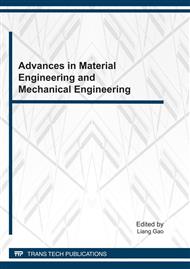[1]
Gao Hong-li: The Investigation of Intelligent Tool Wear Monitoring Techniques for Metal Cutting Process,Ph.D. Southwest Jiaotong University,China, Sep. (2005).
Google Scholar
[2]
Wang Wei:Research on Too1 Condition Monitoring and on-line Compensation Technology in Milling Special Spiral Rod,Ph.D. Northeast University,Feb. (2006).
Google Scholar
[3]
Scholkopf, B., Smola, A. J., & Muller, K. -R. Nonlinear component analysis as a kernel eigenvalue problem. Journal of Neural Computation, 1299-1319, Oct. (1998).
DOI: 10.1162/089976698300017467
Google Scholar
[4]
Jianning Wu, Jue Wang, Li Liu. Feature extraction via KPCA for classification of gait patterns, Human Movement Science 26, 393-411, (2007).
DOI: 10.1016/j.humov.2007.01.015
Google Scholar
[5]
Kim, K. I., Franz, M.O., & Scholkopf, B. Iterative kernel principal component analysis for image modeling. IEEE Transactions on Pattern Analysis and Machine Intelligence, 27, 1352-1366. (2005).
DOI: 10.1109/tpami.2005.181
Google Scholar
[6]
Cao, L. J., Chua, K. S., & Chong, W. K. A comparison of PCA, KPCA and ICA for dimensionality reduction in support vector machine. Neurocomputing, 55, 321-336. (2003).
DOI: 10.1016/s0925-2312(03)00433-8
Google Scholar
[7]
Begg, R., & Kamruzzaman, J. A machine learning approach for automated recognition of movement patterns using basic, kinetic and kinematic gait data. Journal of Biomechanics, 38, 401-408. (2005).
DOI: 10.1016/j.jbiomech.2004.05.002
Google Scholar
[8]
Vapnik, V. N. Statistical learning theory. New York: Wiley. (1998).
Google Scholar
[9]
Ben-Yacoub,S., Abdeljaoued, Y., & Mayoraz, E. Fusion of face and speech data for person identity verification. IEEE Transactions on Neural Networks, 10, 1065-1074. (1999).
DOI: 10.1109/72.788647
Google Scholar


